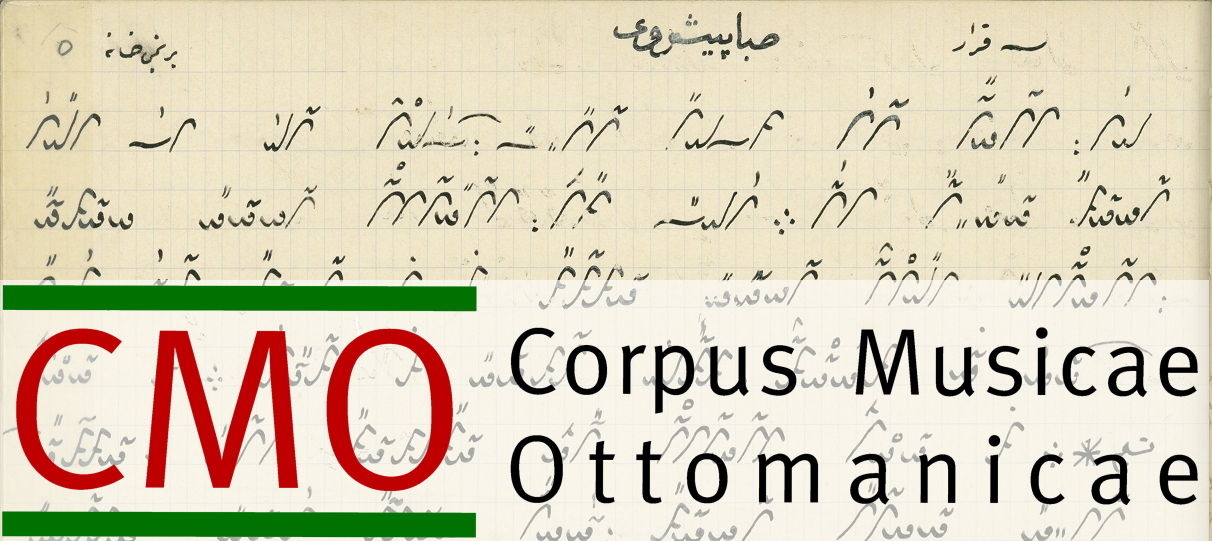
Writing the courtly and urban music of Ottoman İstanbul became widespread during the 19th century. The “Hampartsum” notation system invented in the early 19th century remained the principal notation system throughout the 19th and early 20th centuries, together with European staff notation which was used from the 1830s onwards. The manuscripts of this era are significant in understanding not only the musical culture of the urban centers of the Middle East and the eastern Mediterranean but also the broader cultural history of the Ottoman Empire.
Corpus Musicae Ottomanicae (CMO) is a long-term project for the critical edition of Near Eastern music manuscripts, including parallel edition of song texts, and the online catalogue of Ottoman music sources. The project focusing on manuscripts of Ottoman music written in Hampartsum and staff notations during the 19th century, is funded by the German Research Foundation (DFG). The CMO editions and source catalogue can be consulted here.
MEI not only serves as a basis for the already published catalogue of Ottoman music sources but also as one alternative representation of music editions. CMO aims to develop guidelines for encoding Near Eastern music as a contribution to future research of non-Western musical traditions.